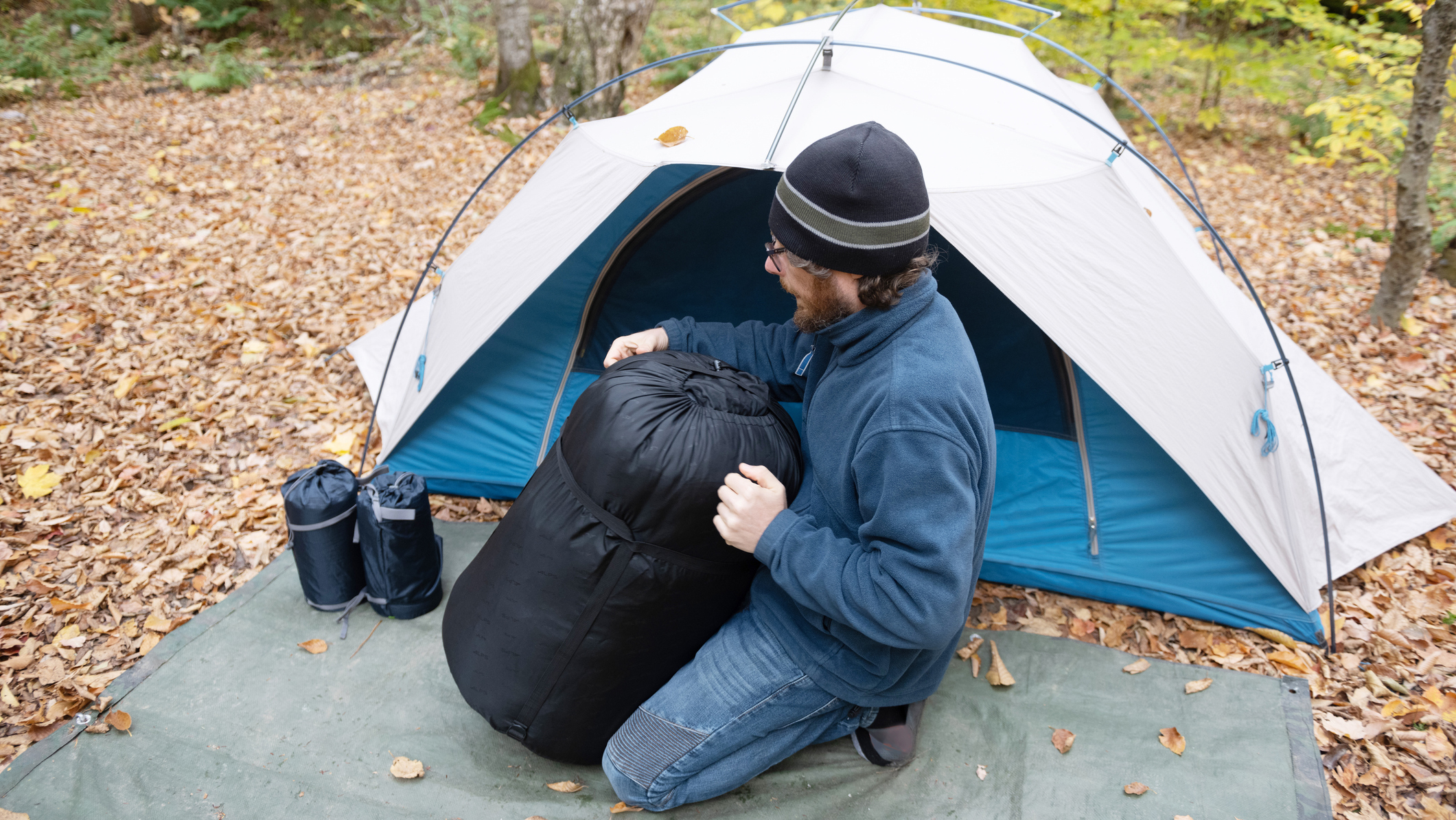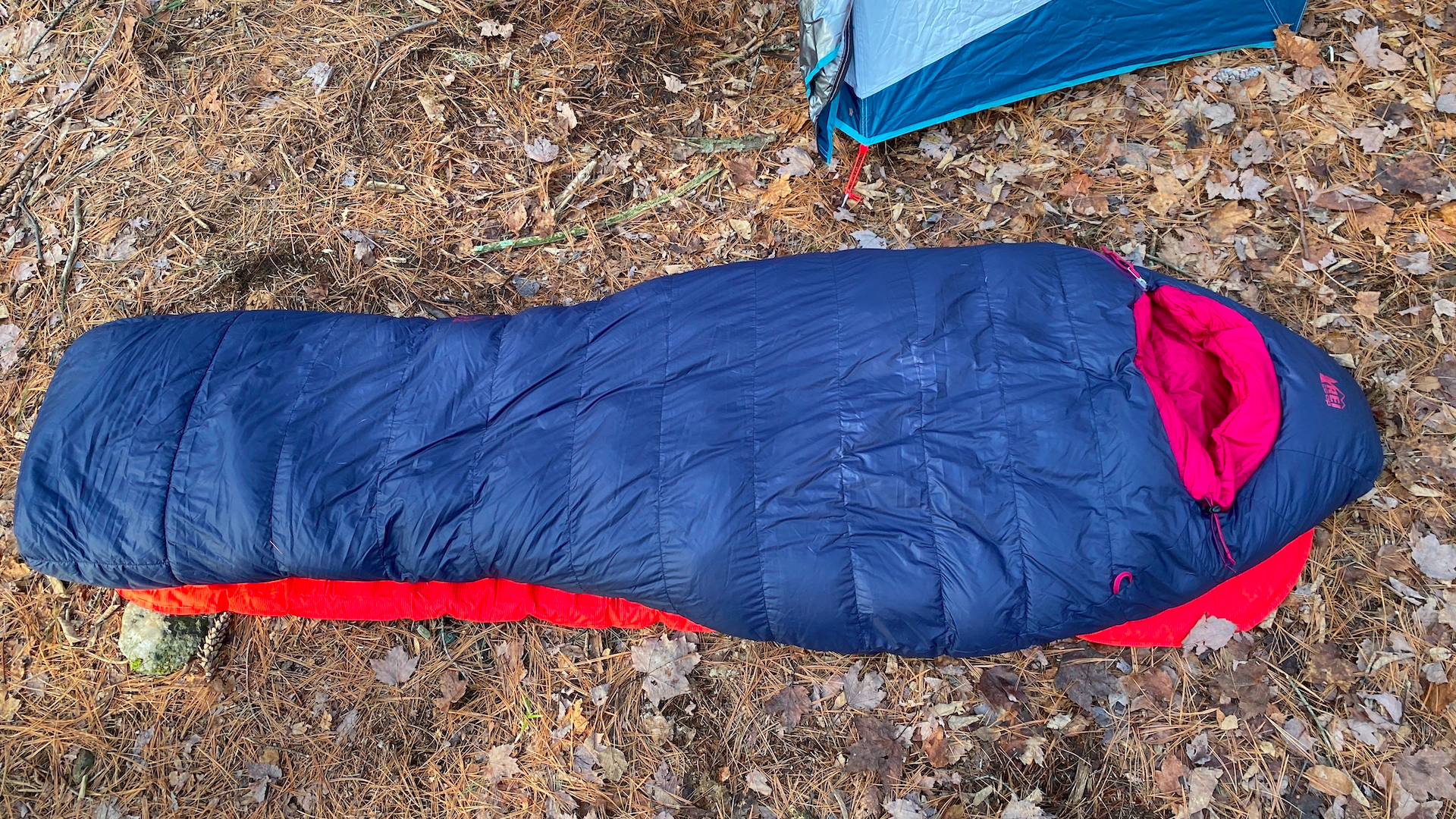How to decode the label on your sleeping bag
Let us take all the work out of things and help you decipher the label on your sleeping bag, to make sure it’s the best choice for your upcoming adventures

Are you excited about spending nights out in the wild? You’re going to want to make sure you have all the best gear now camping season is here. First, a tent that can protect you against wind and rain but is easy to pitch. Next, a sleeping pad that inflates easily and keeps you comfortable even though you’re lying on the hard ground. Finally, you want to unroll a soft, cozy sleeping bag that provides warmth and breathability while you sleep.
Choosing the right sleeping bag is essential for spending a blissful night under the stars. It needs to be the right shape and size, warm enough but not too warm, packable and light, and there are so many great bags to choose from these days.
When you start shopping for a new sleeping bag, however, you might find the amount of information on the label a little overwhelming. What is fill power? Compressed volume? And what’s the difference between temperature, comfort, and lower limit ratings? Let us take all the work out of things and help you decode the label on your sleeping bag, so you know exactly what you’re getting for your money, and make sure it’s the best choice for your upcoming adventures.

Gender
Most sleeping bags will indicate whether they are designed for men, women or are unisex. You don’t have to shop by your gender, but it is helpful to understand that between men’s and women’s bags, there are some differences. Men’s sleeping bags are usually a bit longer, while women’s are often warmer, which assumes that women are cold sleepers. Learn more in our article on women’s vs men’s sleeping bags.
Shell/lining
The shell of your sleeping bag is the outer material and the lining is the inner material, and together this is what your skin comes into contact with while you’re sleeping. These are nearly always the same material, though you can find bags with synthetic shells and cotton lining, so it’s worth checking. There are flannel sleeping bags, which can be great for car camping, but for light backpacking gear, you’re almost always going to see that the shell and lining is made using either nylon or polyester.
These two fabrics share a lot of the same properties and are both good options. Nylon, however, has that really silky feeling whereas polyester can be slightly rougher to the touch. Nylon can be constructed to be more lightweight than polyester and has better resistance to fungi and mildew. Polyester, meanwhile, is extremely durable against abrasion and heat, and dries a little faster than nylon if it gets wet on your adventures.
Both of these fabrics can be pretty breathable, but if you’re looking for something that’s ultra-breathable and soft against your skin, and weight is no object, cotton is actually the best choice – just don’t let it get wet.
All the latest inspiration, tips and guides to help you plan your next Advnture!

Fill
Fill refers to the type of insulation inside your sleeping bag, and it will either be down or synthetic. Down, usually goose or duck, offers the best warmth-to-weight ratio and is really light and packable, however it’s not as durable and won’t insulate well when wet. Meanwhile, synthetic down is heavier and bulkier (though it’s getting lighter every day) but will keep you warm if it gets wet and is hardier. There are also ethical concerns between the two, which you can learn more about in our article on down vs synthetic insulation, and it’s important to look for ethically sourced down or recycled synthetic fill.
Fill power
You’ll typically see a fill power rating on your sleeping bag between 300 and 900. Fill power is a little complicated, which is why we wrote a whole article on it, but in short, fill power describes down’s ability to fluff back up after being compressed – the more it can fluff up, the more air it’s able to trap which means more heat provided for your body. That said, how warm a bag is also depends on the quantity of down, which isn’t often on the label, and to understand that, you’ll want to read on for temperature, comfort and lower limit ratings.

Temperature rating
Not all sleeping bags will show a temperature rating, but if yours has an “ISO” or “En” temperature rating, it refers to the temperature range at which the bag will work best. It’s important to know that this is calculated in a lab setting, and should be considered a guesstimate at best. To determine the temperature rating of a bag, it is tested with a dummy in standard conditions, such as wearing the same base layers and at the same temperature.
This scenario doesn’t account for all the possible variables, such as what clothes you’re actually wearing, the R-value of your sleeping pad, the outside temperature and whether you’re a warm or cold sleeper, so you’ll want to make sure you also check the comfort rating.
Still, if you’re looking for a bag for specific conditions, such as summer or winter, it’s a good idea to check the temperature rating as a baseline, so you don’t end up camping in zero-degree weather in a bag rated for 30F conditions.
Comfort rating
The comfort rating on a sleeping bag is the rating that’s more commonly used on women’s sleeping bags and it indicates the temperature at which you’re likely to be the most comfortable, rather than the minimum or maximum temperature at which the bag should be used. This can be quite different to the temperature rating – for example, when we tested the Therm-a-Rest Parsec 0F/-18C, we discovered that while its temperature rating is 0F, its comfort rating is actually 14F.
If you’re planning on camping outside of summer or at higher elevations, it’s vital to research what the lowest temperature you might sleeping in could be, then make sure the comfort rating of your bag is a little higher than that for safety.

Lower limit
Complicating matters further, your sleeping bag may also display a lower limit rating, which is a little more common on men’s and unisex sleeping bags. This indicates the lowest temperature at which the user might still be comfortable, and you’ll notice this is usually a lower temperature than the comfort rating on a women’s bag.
Compressed volume
If you’re hiking to your campsite, your sleeping bag is going to be stuffed inside a compression sack so that you can carry it, and you’re going to want to know just how much space it will take up. Most sleeping bags will display their compressed volume, in liters, which might not sound too intuitive, but it’s actually quite simple.
If your bag has a 5-liter compressed volume and you’re hiking with a 50-liter backpack, it’s going to take up around a tenth of your available space, but only in theory. In practice, your backpack volume does include all pockets and compartments, so it’s not quite that precise, but it gives you a starting point to work from.

Shape
There are various shapes of sleeping bags available, with the primary two being rectangular and mummy bags, followed by sub-types such as double, quilts and zipless. Mummy-style bags are the most popular these days, because they’re lighter and draft-resistant, while rectangular bags are less restrictive and great for side sleepers. Learn more in our article on the different types of sleeping bags.
Zipper location
You probably don’t need us to explain what this means, but you may not understand the significance of whether your sleeping bag zipper is on the left or right side. As we explain in our article on sleeping bag zippers, your choice probably has less to do with your dominant hand and more to do with how ambidextrous you are and whether your sleeping bag shape, your body mass and your general level of contortionism give you room to move. Choosing the wrong one could be really annoying, so consider trying a few before you splurge.
Julia Clarke is a staff writer for Advnture.com and the author of the book Restorative Yoga for Beginners. She loves to explore mountains on foot, bike, skis and belay and then recover on the the yoga mat. Julia graduated with a degree in journalism in 2004 and spent eight years working as a radio presenter in Kansas City, Vermont, Boston and New York City before discovering the joys of the Rocky Mountains. She then detoured west to Colorado and enjoyed 11 years teaching yoga in Vail before returning to her hometown of Glasgow, Scotland in 2020 to focus on family and writing.

